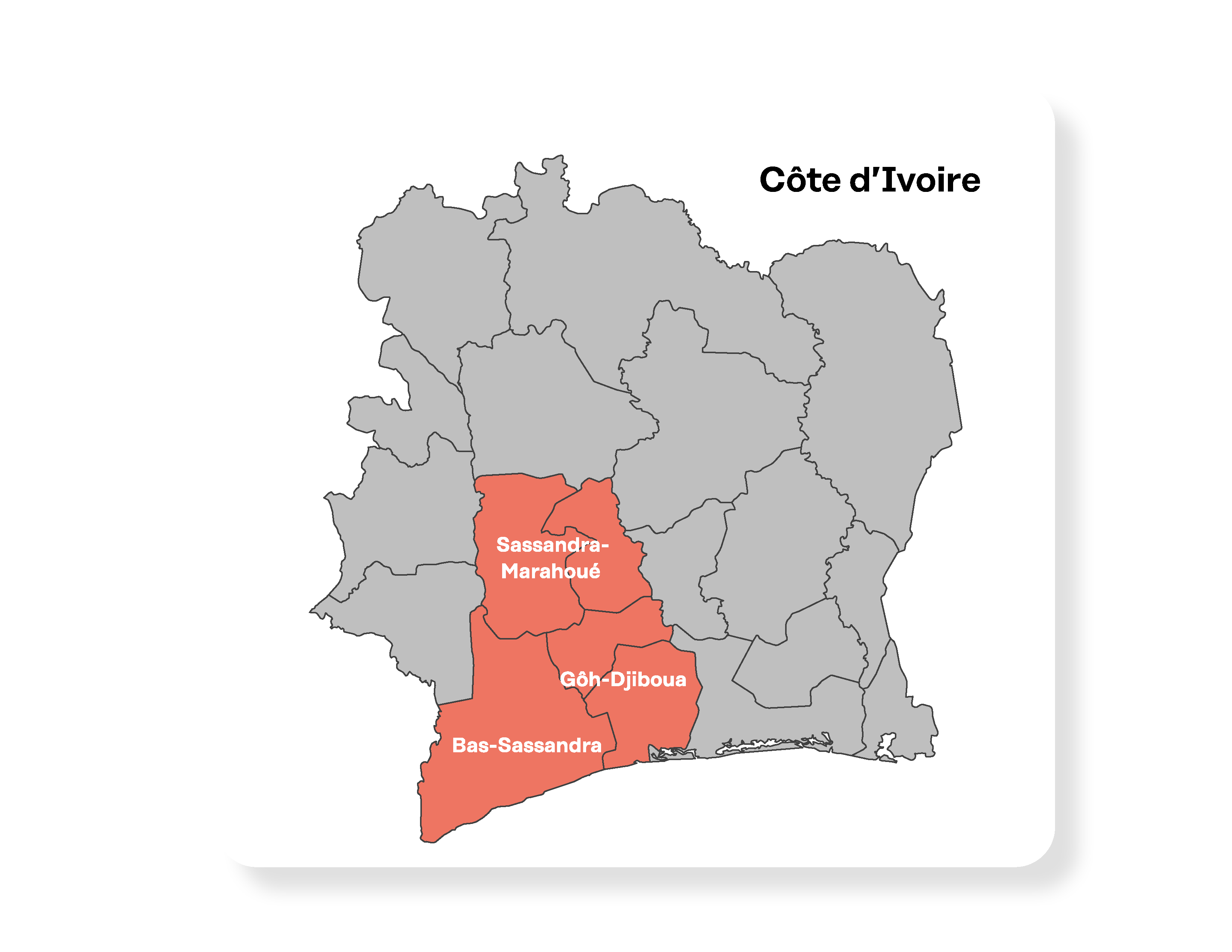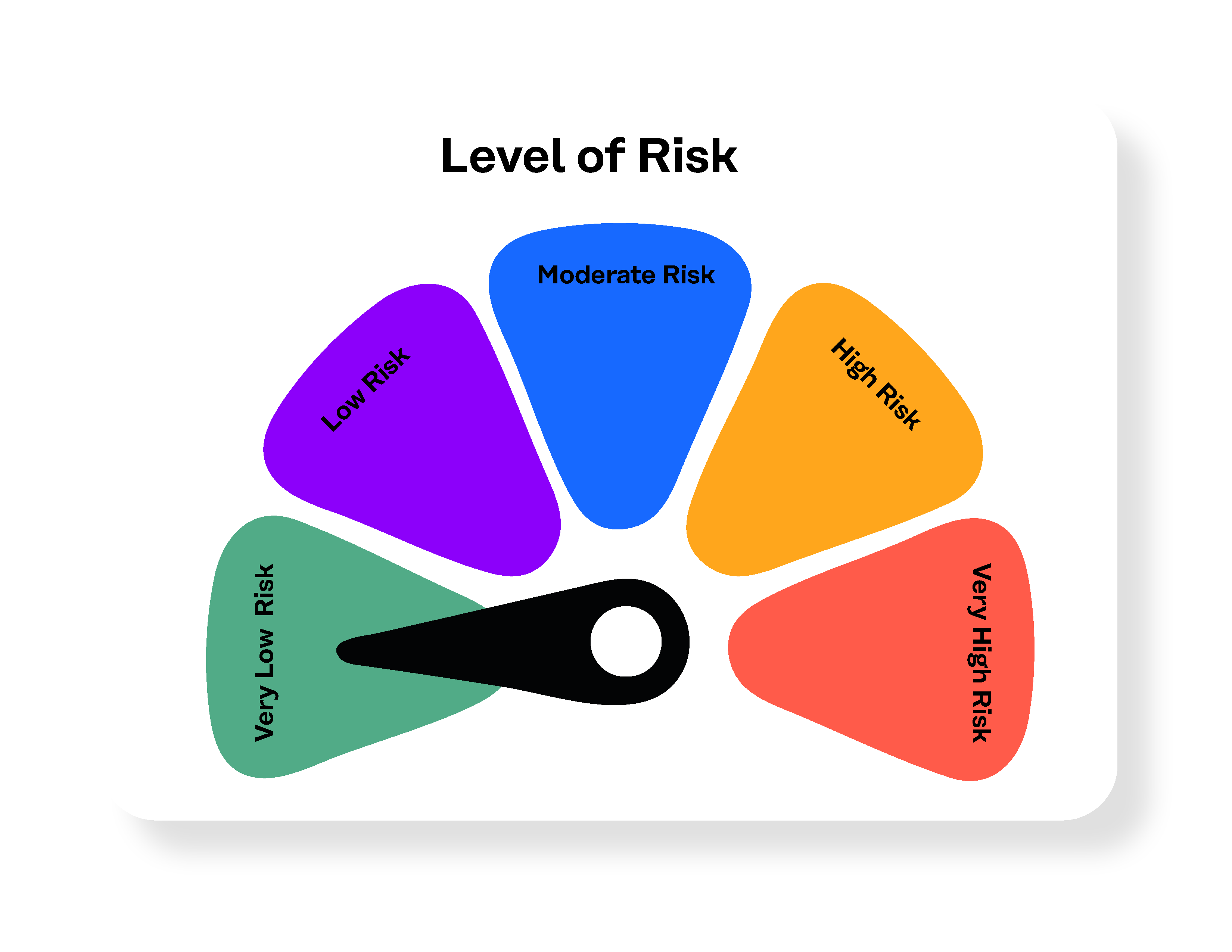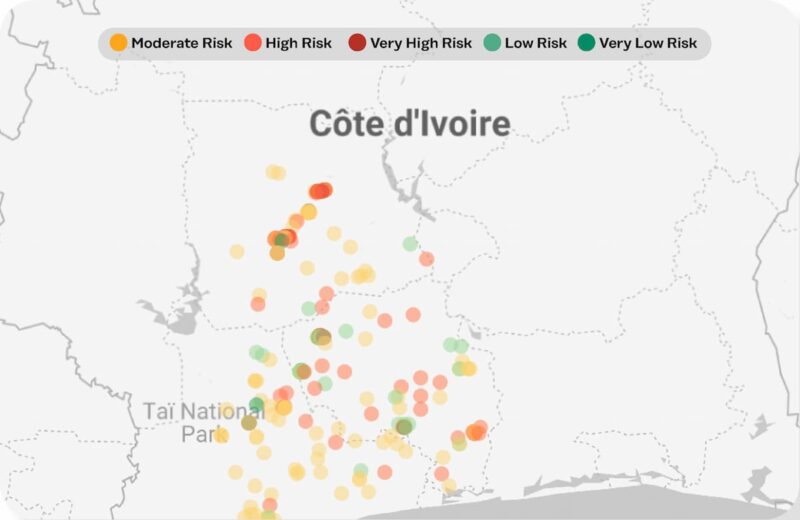Challenge
In many low and middle-income countries, where economic disparities often prevail, labor practices can be susceptible to modern slavery*. It is therefore critical to track work conditions closely and promote basic human rights, as the consequences of a lack of attention can have far-reaching consequences, not only for the well-being of employees but also for the reputation and sustainability of the organizations that employ them.
To better understand the conditions of workers in the cocoa sector, Premise, together with an independent market leader in soft commodities, ran a survey in an area of Cote D’IVoire housing approximately 49% of the cocoa farms in the region.
The objective was to expand reach in conducting oversight while minimizing physical footprint. To do that, we created an overall risk score determined by answers to survey questions and plotted them on a map. Participants were deemed as very low risk, low risk, moderate risk, high risk, or very high risk for experiencing forced labor**.
Solution
Using Premise, our partner ran a survey in three administrative districts within Cote D’IVoire during peak cocoa harvest season. Survey respondents were recruited through the Premise app and referrals from Pisteurs***. We targeted four groups identified in the initial screening survey: farm owners, sharecroppers, laborers, and community members. Each group received their own unique survey on topics like unethical recruitment, intimidation, and economic dependence.
Participants had the opportunity to report on their own experience at their leisure, reducing the risk of bias that could arise during in-person interviews. They were also asked to upload a photo of the farm on which they work and the area where they live or sleep.
In the International Labour Office guidelines, a person is classified as being in forced labor if engaged in any work that is both under the threat of penalty and involuntary. Both conditions must exist for this to be regarded as forced labor. Each respondent was given a risk score based on their responses to questions gauging involuntariness and threat of penalty.

Premise ran a survey in three cacao-growing districts in Cote
D’IVoire: Sassandra-Marahoue, Goh-Djiboua, and Bas-Sassandra

An overall risk score was determined based on answers to questions
Findings
The survey results determined that risk can be identified down to a specific geographic level. Due to the sensitive nature of this type of work, we cannot reveal the actual data associated with the data collection. However, one of the most promising aspects of this research is that all of the groups under study provided information around risk, even farmers. We initially hypothesized that the act of reporting risk would be limited to laborers and sharecroppers, yet farmers and community members were equally likely to cite risk. In some instances, farmers were their own worst critics.
The hues displayed on this map symbolize the diverse varying of risk. The objective is to provide a dynamic heat map capable of offering instantaneous risk level assessments, enabling cocoa organizations to discern regions with a higher likelihood of safety for cocoa purchase and to pinpoint areas warranting heightened remedial attention.
The survey determined that risk can be identified down to a specific geographic level. The map above is for illustrative
purposes only due to the sensitive nature of the data.
Implications
Monitoring and improving work conditions safeguards the well-being of employees, ensures legal compliance, enhances reputation, and fosters sustainable growth, particularly in regions where labor practices may be vulnerable. By prioritizing labor conditions, organizations can not only benefit their employees but also contribute to a fairer, more ethical global economy.
The Premise approach provides the ability to monitor risk on an ongoing basis and identify areas needing improvement while also tracking the impact of remediation efforts over time. We offer a solution that enables organizations to better understand the risk of forced labor and take concrete steps to move toward no risk.
** “All work or service which is exacted from any person under the threat of a penalty and for which the person has not offered himself or herself voluntarily. International” Labour Organization Forced Labour Convention, 1930 (No. 29)
*** Direct cocoa buyers
